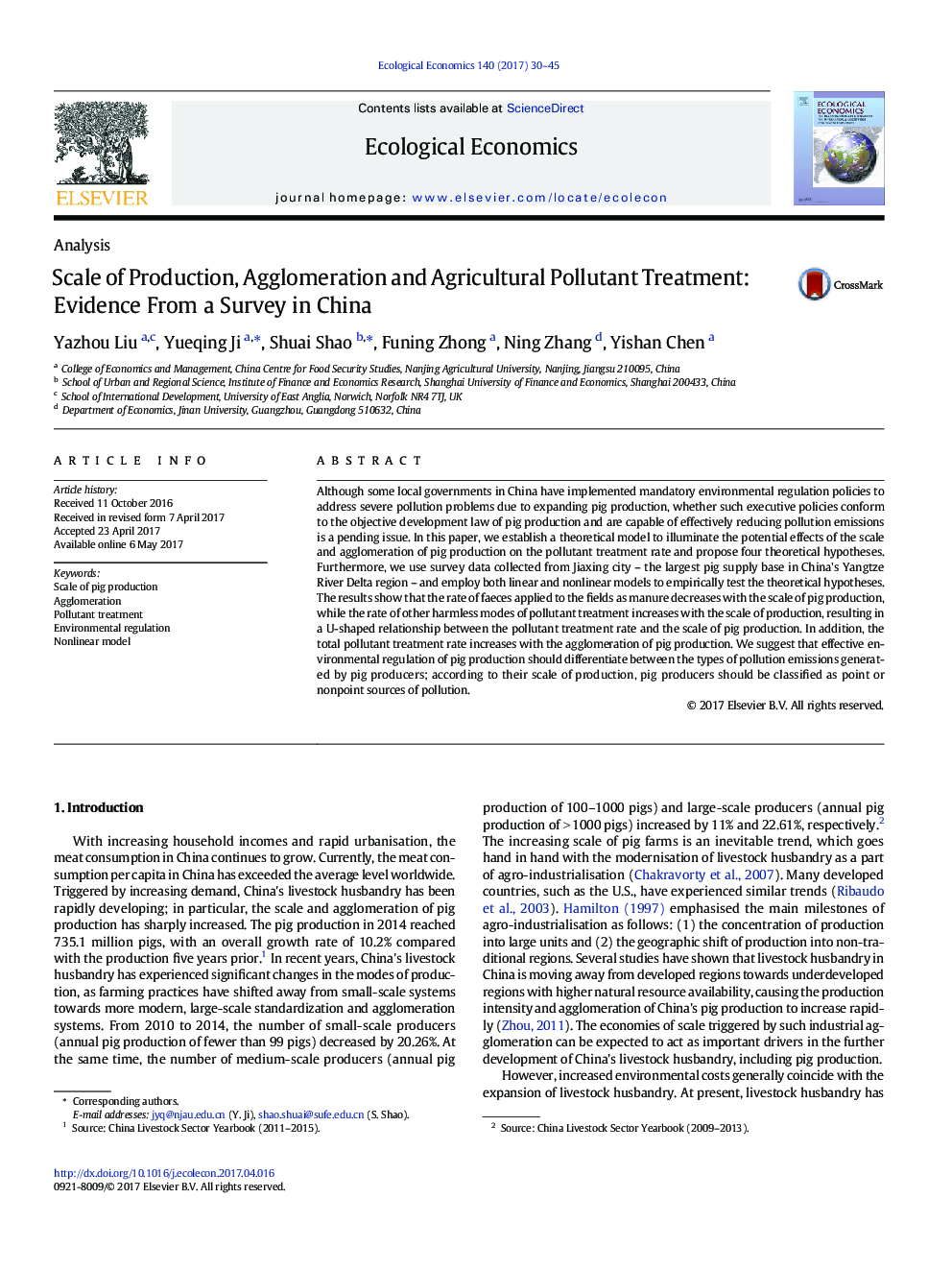| کد مقاله | کد نشریه | سال انتشار | مقاله انگلیسی | نسخه تمام متن |
|---|---|---|---|---|
| 5048619 | 1476339 | 2017 | 16 صفحه PDF | دانلود رایگان |

- We study how the scale and agglomeration of pig production affect pollutant emissions.
- A theoretical model is established and four theoretical hypotheses are proposed.
- We use the survey data from China to empirically verify the theoretical hypotheses.
- A U-shaped curve exists between pollutant treatment rate and pig production scale.
- Total pollutant treatment rate increases with the agglomeration of pig production.
Although some local governments in China have implemented mandatory environmental regulation policies to address severe pollution problems due to expanding pig production, whether such executive policies conform to the objective development law of pig production and are capable of effectively reducing pollution emissions is a pending issue. In this paper, we establish a theoretical model to illuminate the potential effects of the scale and agglomeration of pig production on the pollutant treatment rate and propose four theoretical hypotheses. Furthermore, we use survey data collected from Jiaxing city - the largest pig supply base in China's Yangtze River Delta region - and employ both linear and nonlinear models to empirically test the theoretical hypotheses. The results show that the rate of faeces applied to the fields as manure decreases with the scale of pig production, while the rate of other harmless modes of pollutant treatment increases with the scale of production, resulting in a U-shaped relationship between the pollutant treatment rate and the scale of pig production. In addition, the total pollutant treatment rate increases with the agglomeration of pig production. We suggest that effective environmental regulation of pig production should differentiate between the types of pollution emissions generated by pig producers; according to their scale of production, pig producers should be classified as point or nonpoint sources of pollution.
Journal: Ecological Economics - Volume 140, October 2017, Pages 30-45